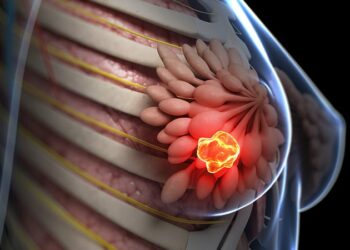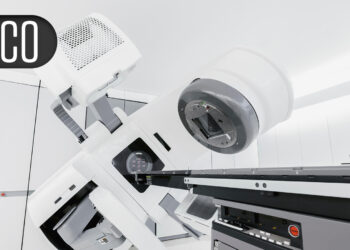WEST PALM BEACH, Fla. — New research testing the newly proposed McDonald Criteria showed that 32% more patients with a radiological-only presentation and 28% more with an atypical presentation would meet the criteria for a multiple sclerosis (MS) diagnosis.
In a cross-sectional study of 166 patients with an atypical presentation and 25 with a radiological-only presentation — none of whom would have met criteria for an MS diagnosis under previous guidance — 32% and 28% of these groups, respectively, received a probable diagnosis.
The findings were presented on March 1 at the Americas Committee for Treatment and Research in Multiple Sclerosis (ACTRIMS) Forum 2025.
Central Vein Sign (CVS) a Useful Tool
In this analysis, the CVS was “among the most useful para-clinical tools to confirm a diagnosis of MS” in either group, said study investigator, Alexandra Scharff, a third year medical student at the Cleveland Clinic in Cleveland, who presented the findings in a late-breaker presentation.
In the previous iteration of the McDonald criteria, which was last revised in 2017, patients needed to have progressive neurological disability as well as typical clinical attacks in order to receive an MS diagnosis, Scharff noted.
The proposed 2024 changes “now allow for the diagnosis of MS in individuals with incidental imaging findings suggestive of demyelinating disease and other clinical presentations not specific to MS.”
In the 2024 revision, dissemination in space (DIS), defined as the presence of lesions in two or more topographies, can be accompanied by dissemination in time (DIT), at least six CVS lesions (Select6), or evidence of intrathecal antibody synthesis, such as oligoclonal bands or kappa-free light chains.
The data used to evaluate these criteria were drawn from patients in the CVS: A Diagnostic Biomarker in Multiple Sclerosis (CAV-MS) study. Originally described in 2021 and led by Daniel Ontaneda, MD, PhD, professor of neurology at the Cleveland Clinic in Cleveland, this study helped lay the groundwork for the proposed inclusion of the CVS in the McDonald criteria.
In addition to assessing the proposed 2024 McDonald criteria in patients with atypical and radiological-only presentations, the current CAV-MS study aimed to evaluate the prevalence of DIT and DIS in these groups. It also examined the role of intrathecal antibody synthesis, DIT, and the CVS Select6 criterion, both individually and collectively, for diagnosis.
The study enrolled 420 patients, including 161 with an atypical presentation and 25 with radiological-only signs. The two groups showed only minor demographic differences. The mean ages were 42 years and 41 years, respectively, and 82% and 88% of them were women. Approximately 80% of participants were Caucasian.
Notably, just 20% of those with radiological-only signs had oligoclonal bands vs 55% of those with atypical presentation, Scharf reported.
When the 191 patients with either an atypical or radiological-only presentation were combined, only seven (4%) met both DIS and DIT criteria. However, all seven patients (six with an atypical presentation and one with a radiological-only presentation) met at least one of the proposed 2024 McDonald criteria.
Of the 44 patients (23%) who met DIS criteria only, 19 met the CVS Select6 criterion, 15 tested positive for oligoclonal bands, and 5 met both the CVS Select6 criterion and tested positive for oligoclonal bands. Ultimately, 29 of these 44 patients met the proposed 2024 McDonald criteria, including 22 with an atypical presentation and seven with a radiological-only presentation.
When the pooled population was evaluated for the individual components of the criteria, 14% met the DIT criterion, 43% met the CVS Select6 criterion, and 33% tested positive for oligoclonal bands.
In the atypical cohort, these criteria were met by 15%, 38%, and 36%, respectively. In the radiological-only cohort, the corresponding proportions were 8%, 58%, and 25%, respectively.
Based on further analysis of these data, Scharf reported that only 4% of patients who met the DIS criterion also met DIT, CVS Select6, and oligoclonal bands criteria. The proportion climbed to 12% for meeting two of these criteria and to 55% for meeting all three of the criteria.
Of the new diagnostic tools, Scharf reiterated that the CVS Select6 criterion was the most useful for confirming a diagnosis for patients with either an atypical presentation or a radiological-only presentation.
Significant Data
Although more long-term data are needed to validate the diagnostic accuracy of the proposed revisions in the McDonald criteria, Daniel S. Reich, MD, PhD, who works in the Translational Neuroradiology Section of the National Institute of Neurological Disorders and Stroke, Bethesda, Maryland, considers these data significant.
Reich, who was not involved in the research, noted that under the previous iteration of the McDonald criteria, “we could not even apply them to about half the patients suspected of MS.”
In addition to increasing the proportion of patients who can be diagnosed with MS with high probability, Reich viewed the revised criteria as “moving us toward the concept of MS as more of a spectrum of signs and symptoms.”
Scharf and Reich reported no potential conflicts of interest. Ontaneda reported financial relationships with Bristol-Myers Squibb, Contineum, Genentech, and Novartis.
Source link : https://www.medscape.com/viewarticle/proposed-multiple-sclerosis-criteria-boost-diagnostic-yield-2025a10005nh?src=rss
Author :
Publish date : 2025-03-07 11:01:00
Copyright for syndicated content belongs to the linked Source.














